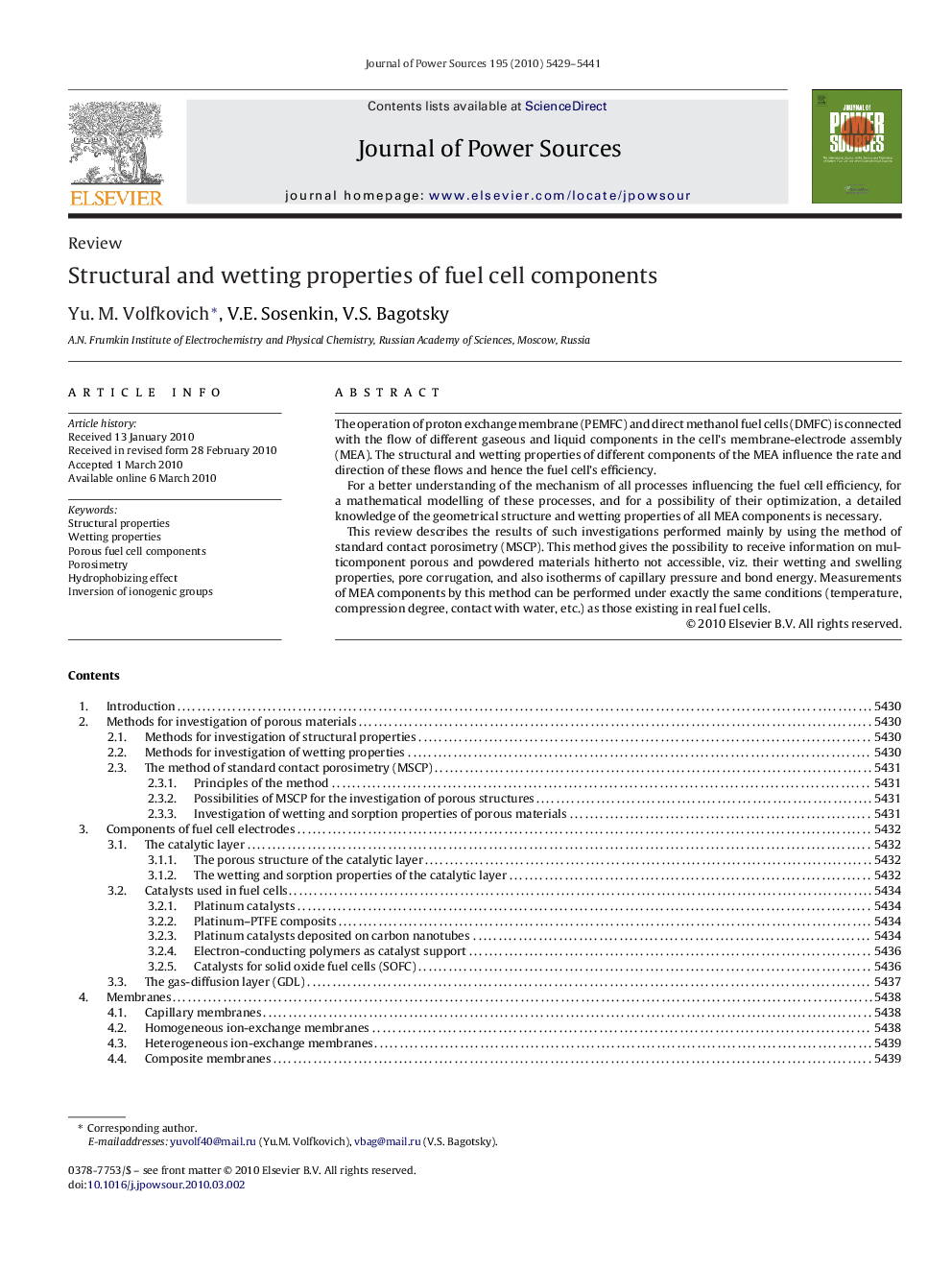| Article ID | Journal | Published Year | Pages | File Type |
|---|---|---|---|---|
| 1293703 | Journal of Power Sources | 2010 | 13 Pages |
The operation of proton exchange membrane (PEMFC) and direct methanol fuel cells (DMFC) is connected with the flow of different gaseous and liquid components in the cell's membrane-electrode assembly (MEA). The structural and wetting properties of different components of the MEA influence the rate and direction of these flows and hence the fuel cell's efficiency.For a better understanding of the mechanism of all processes influencing the fuel cell efficiency, for a mathematical modelling of these processes, and for a possibility of their optimization, a detailed knowledge of the geometrical structure and wetting properties of all MEA components is necessary.This review describes the results of such investigations performed mainly by using the method of standard contact porosimetry (MSCP). This method gives the possibility to receive information on multicomponent porous and powdered materials hitherto not accessible, viz. their wetting and swelling properties, pore corrugation, and also isotherms of capillary pressure and bond energy. Measurements of MEA components by this method can be performed under exactly the same conditions (temperature, compression degree, contact with water, etc.) as those existing in real fuel cells.
